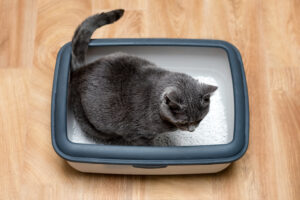Do your cat’s nails click-clack on the floor? Do they snag your clothes or furniture? It might be time for a nail trim! While it may seem daunting, trimming your cat’s nails at home is a doable task that can save you money and strengthen your bond with your feline friend.
Why Should You Trim Your Cat’s Nails?
- Comfort: Overgrown nails can curve into your cat’s paw pads, causing pain and difficulty walking.
- Safety: Sharp claws can lead to accidental scratches on you, your family, or your furniture.
- Health: Trimming nails reduces the risk of them getting caught and torn.
Gather Your Tools
- Cat Nail Clippers: These are specifically designed for feline claws. Avoid using human nail clippers, as they can crush or split the nail.
- Styptic Powder: In case you accidentally cut the quick (the pink part of the nail that contains blood vessels), styptic powder helps stop bleeding.
- Treats: Positive reinforcement makes the experience more enjoyable for your cat.
Trimming Your Cat’s Nails: A Step-by-Step Guide
- Choose a Calm Time: Wait for your cat to be relaxed, perhaps after a meal or a nap.
- Familiarize Your Cat: Let your cat sniff the clippers and offer treats for gentle paw handling.
- Find a Comfortable Position: You can hold your cat in your lap, on a table, or wherever they feel most secure.
- Extend the Claw: Gently press on the top and bottom of your cat’s paw pad to extend the claw.
- Identify the Quick: The quick is the pink part inside the nail. Avoid cutting it. If your cat has dark nails, trim a small amount at a time.
- Clip the Tip: Cut the white tip of the nail at a slight angle, following the natural curve.
- Reward and Repeat: Offer your cat a treat after each nail trim. Start with one paw at a time, gradually increasing the number of nails you trim in each session.
Troubleshooting Common Issues
- Cat is Resisting: If your cat struggles, stop, offer a treat, and try again later.
- Bleeding: If you accidentally cut the quick, apply styptic powder to stop the bleeding.
- Nervousness: Consider wrapping your cat in a towel to create a “cat burrito” for a sense of security.
Tips for a Successful Trim
- Start Early: Introduce nail trims to your cat when they are a kitten to make it a normal routine.
- Be Patient: Don’t rush. It’s better to trim a few nails at a time than to force a full trim.
- Enlist Help: If needed, ask a friend or family member to help hold your cat.
- Consult Your Vet: If you’re unsure, your vet can demonstrate proper trimming techniques.
When to Call the Professionals
If your cat is extremely resistant or if you’re uncomfortable trimming their nails, consider taking them to a groomer or veterinarian.
Additional Tips for Happy Paws
- Make nail trims a regular part of your cat’s grooming routine, aiming for every 2-3 weeks.
- Provide scratching posts to encourage your cat to naturally wear down their nails.
Remember:
Trimming your cat’s nails is an act of love. With patience and practice, it can become a stress-free experience for both you and your feline companion.






